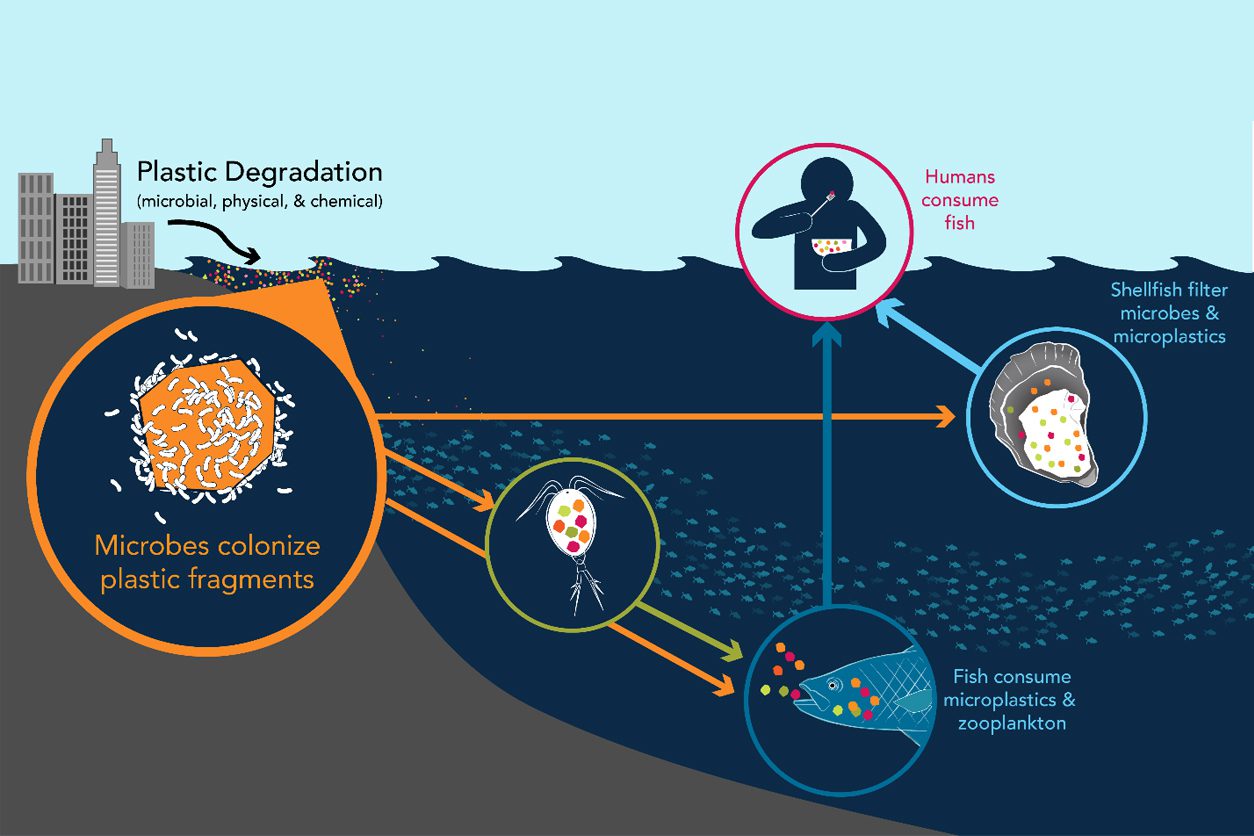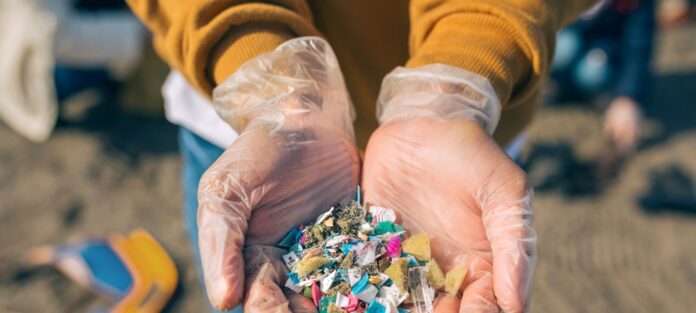Microplastics are now found everywhere: in the Arctic ice and Mount Everest snow, in ordinary tap water and bottles. According to research, even in people’s blood, tiny particles of plastic travel through the body and settle in organs.
Let’s understand how microplastics get into our lives and how dangerous they are. Even if you think you can hide from the effects of microplastics by hiding out at home, playing casino slots online and living on groceries from delivery – you can’t. And we will tell you how to protect yourself as much as possible from this scourge.
What is Microplastic?
Microplastic is any plastic particles up to 5 mm. It can be primary and secondary. The primary is used to produce cosmetics, toothpaste, and household chemicals – it is added as a stabilizing agent to regulate viscosity or achieve an antistatic effect. Glitter, for example, also contains microplastics – just for beauty.
Secondary microplastics come from the breakdown of plastic waste: bottles, bags, disposable tableware, etc. Once in landfills, such materials crack due to temperature fluctuations and sunlight and decompose into tiny particles that pollute the environment. In addition, vast amounts of plastic particles go down the drain when synthetic clothing is washed. Another source of microplastics is automobile tires. The plastic dust released when tires rub against the road settles in water and soil, saturates the air, and is ingested.
Plastic production became mass-produced in the 1950s, so all the material created during that time had already become part of the environment. Now, plastic production reaches 400 million tons per year, which will only increase – which means the amount of microplastics in the world will, too.
How microplastics get into the human body
Microplastics enter the human body from the air we breathe in, water, and food. According to scientists, the primary source of plastic in water for drinking is wastewater, which undergoes insufficient treatment.
In addition, microplastics are found in common table salt, sugar, beer and seafood. Even tea can be a source of microplastics if its bags are made of polymers. As for vegetables, fruits, meat and cereals, scientists do not have exact data on how much they are contaminated with plastic.
What is the danger of microplastics for humans?
The main threat is not so much in the molecules of plastic itself, which may not be dangerous, but in additives to it. Stabilizers, dyes and other substances are added to plastic to make things more durable or conversely flexible. They can be very toxic and harmful to the body.
Microplastics harm different creatures in their way; for example, some additives slow down phytoplankton growth and reproduction. Birds and fish eat small particles of plastic that fill their stomachs and replace average food. It causes animals to starve to death.
According to studies by the World Health Organization (WHO), the harm of microplastics to humans has yet to be proven: there is too little data. Some studies show that large particles leave the body with urine and feces, but nanoplastic is retained. However, its effect on organ function has yet to be closely examined.
How to reduce microplastics
There are ways to help limit the amount of microplastics in drinking water. It’s best to avoid plastic as much as possible: don’t buy disposable dishes and tubes; draw water from a filter. Here are some tips to help reduce the penetration of plastic into the body.
- Don’t buy water in plastic bottles. Get an aluminum bottle and take it with you. It’s best to use filtered water: it’s known to have half as much plastic as bottled water.
- Try to reduce the amount of plastic in your life. Use reusable glassware and ceramic or safe food-grade plastic.
- Make a habit of separating your trash. Collect plastic packaging after use and recycle it. Separate containers are handy for this.

Conclusion
Microplastics have emerged as a growing concern for society and the environment. While they may be small, their impact is significant and far-reaching. Here, we delve into the harm that microplastics inflict on society.
- First and foremost, microplastics pose a substantial threat to human health. These minuscule particles can infiltrate our food chain through marine life and contaminate the seafood we consume. When ingested, they may accumulate in our bodies, potentially leading to various health issues, including inflammation, oxidative stress, and organ damage.
- Furthermore, microplastics are omnipresent in our environment. They have been detected in the air we breathe, the water we drink, and the soil in which we grow our crops. This widespread contamination has raised concerns about the long-term environmental and human health consequences.
- In addition to health concerns, microplastics have detrimental effects on ecosystems. Aquatic life, such as fish and marine mammals, can ingest these particles, leading to physical harm and disruptions in their natural behaviour. Moreover, introducing microplastics into soil can impact plant growth and potentially disrupt the delicate balance of terrestrial ecosystems.
- The economic implications of microplastic pollution are also noteworthy. Cleaning microplastics from water bodies and mitigating their effects on aquatic life require substantial resources and investments. Additionally, industries reliant on clean and healthy ecosystems, such as fisheries and tourism, may suffer economic losses due to microplastic pollution.
- To address the damage caused by microplastics, comprehensive measures are required. These include reducing the use of single-use plastics, improving waste management and recycling systems, and conducting further research to understand the extent of the problem. Informed consumer choices and governmental policies are crucial steps toward mitigating the harm of microplastics to society and the environment.
In conclusion, the harm caused by microplastics to society is a multifaceted issue encompassing health risks, environmental degradation, and economic consequences. Addressing this problem requires a collective effort, with individuals, industries, and governments working together to reduce microplastic pollution and safeguard our health and the planet.

